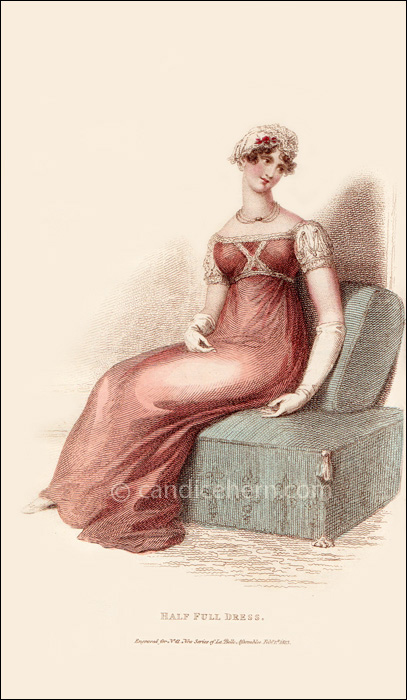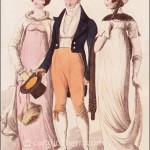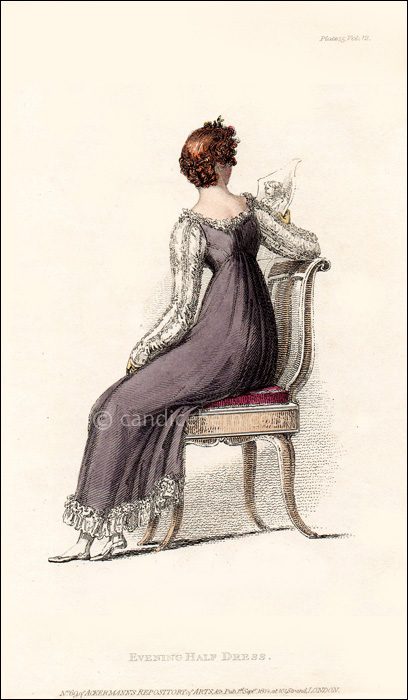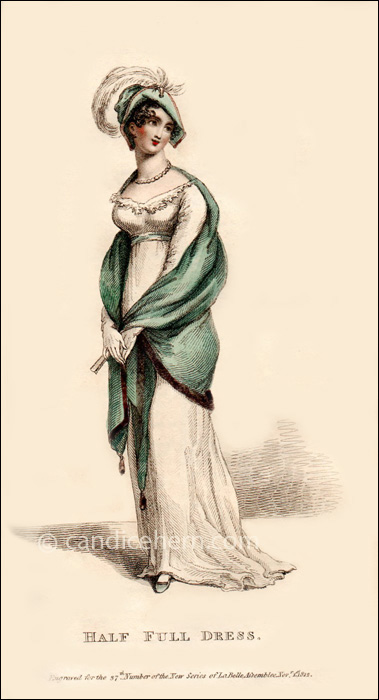La Belle Assemblée, February 1813.
“Half Full Dress”
Half Full Dress is one of the most confusing terms, and is never explained in any of the contemporary magazines. One assumes that readers understood what it meant. I can only suggest it is better than Half Dress but not quite as fine as Full Dress. I’m not sure what makes this dress better than a Half Dress, as it is rather simple. The lace sleeves are quite pretty, but is that enough to make this a Half Full Dress?
I do think the amber satin of the dress, shot with white, must have been lovely in person.
The General Observations on Fashion and Dress in this issue speaks at length about how “Wellington mania” has been surpassed by all things “Regency.” Hence, we have in this print a Regency cap. I’m not sure why, after 4 years, the Regent has suddenly become popular, but there you have it.
The print is described in the magazine as follows:
“Plain frock of amber satin cloth, shot with white, and ornamented round the bosom and the waist with a rich white silk trimming, which is called frost work; it is the lightest and most elegant thing we have seen for some time, and is universally worn; a double row of this trimming crosses the breast, and forms the shape of the bosom: the back, which is plain and very broad, is ornamented with pearl buttons, or small silks ones to correspond with the trimming. White lace sleeves, made very full, fastened about the middle of the arm by a broad band of letting in lace, and drawn up by two buttons near the shoulder, while the fullness which falls near the bottom is confined by one; plain demi-train. Regency cap of white lace, with a small front turned up all round, and what was formerly termed a beef eater’s crown; the lace in the crown drawn very full and tightened in by strings of pearl; a tassel of pearls is affixed to the right side of the crown, and a rich amber flower ornaments it in front. Pearl necklace and small cornelian ornament of an oval shape. White kid gloves and slippers.”








